I recently sat down with Nick Robalik, also known as indie developer PixelMetal. We discussed online gaming, development, and his upcoming twin-stick multiplayer platforming shooter project, Sombrero.
Nate: I’ll let you introduce yourself to our readers.
Nick: I’m Nick Robalik. I run a small — small, as in just me — indie game studio called PixelMetal. I’m working on finishing up Sombrero, which will be the first game underneath that company. So, I’m trying to make sure I’m doing it right and doing a good job on it so that people don’t immediately think everything sucks.
Nate: I hear that’s a good approach — trying to do a good job.
Nick: [laughing] Yeah. Try to do a good job right out of the gate, for this one. Worked on games in the past, doing contract stuff mostly. Some shareware stuff, way back in the day — in the 90’s. But it’s been a while, so I’m just trying to make sure I’m doing a good job this time, doing as good a job as I can possibly do, which hopefully people will like.
Nate: So the game, in a nutshell…
Nick: Sombrero is a “competitive multiplayer platformer,” with local and online multiplayer. That’s what I’ve been able to squeeze it down to, is just those few words. And it took me three years to figure out how to squeeze it down to those three words. So, it’s a little bit like Towerfall, it’s a little bit like Samurai Gunn, Duck Game — which I still haven’t played, and I feel like I really need to play it, because that one seems like the most similar to Sombrero. But that’s also why I haven’t played it, because I don’t want people to say, “Oh, he just remade Duck Game,” when actually I haven’t played it.
Nate: I’d say they’re definitely similar, but still distinct. Not “the same.”
Nick: Okay, good.
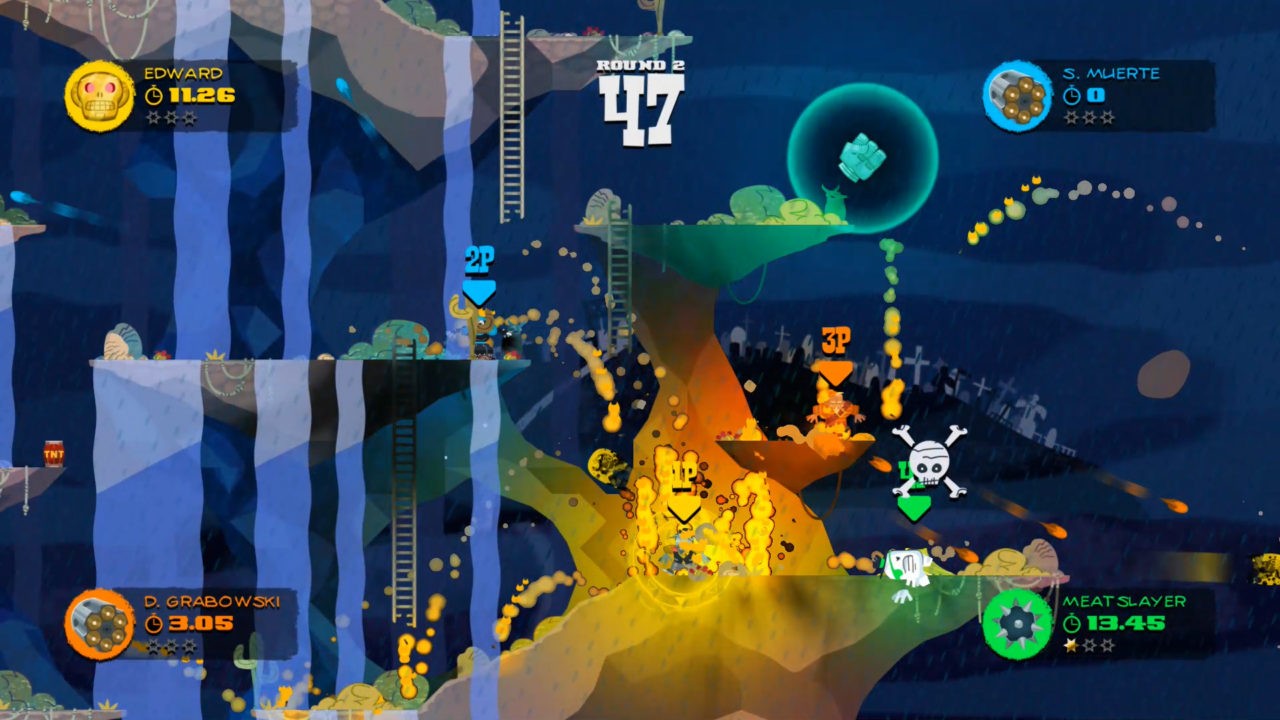
Nate: And online play is a recent confirmation, right?
Nick: Yeah, yeah. So, I think since we last spoke, I’m not even sure if I had the publisher — if the publisher stuff had even started at that point.
Nate: No, but you had mentioned that there might have been some rumblings.
Nick: So, yeah, that was a while ago. This past April — I think it was April, it was right before SXSW, like literally right before I got on the flight to go down for that — is when the contract finally got signed. So, there’s an indie game with a publisher now. I guess that’s still an indie right, because they don’t own it? They just publish it. So I can still say indie, hopefully. It’s still just me, either way, doing everything.
But it’s been nice to be able to hand off to the publisher, handling stuff like QA — they’ve hired a QA company to go through everything, and do bug testing, and all that kind of stuff, so that saved a lot of time; before I could really only bug test by observing at game events before — you know, little conventions and that kind of thing. So it’s good that they are ahead of schedule, and they actually have a real bug testing system set up, instead of just a Google spreadsheet, which is what I had.
Now there are a dozen people testing it at any given time, destroying my sanity, finding all these weird bugs. They’re doing things that no one in their right mind would ever do while playing a game. You know, that’s good if that works. If people doing the “wrong” thing works, then hopefully people doing the thing that they’re supposed to be doing will also work. So, it’s good that they’re giving me gray hairs.
Oh, I should probably say the name of the publisher too. They’re called Alliance. Alliance Digital Media, and they’ve been a distributor for a very long time. Since, I think, the Atari, the original Atari days. So, for me that was good, because they know how to handle distribution and all that kind of stuff, and they hired a PR agency for it. It’s a lot off my plate, so it’s totally worth it.
Nate: Absolutely. Let’s talk a little more about the game itself. Unlike some of the others, Sombrero has multiple modes of play. Aside from the self-explanatory “deathmatch” and “team deathmatch” modes, what are we looking at?
Nick: There’s Loot, which is about running around and capturing points — which are campfires in Sombrero, because of the western theme — and then grabbing bags of money. Each campfire you capture adds a multiplier to the bags of money. In Loot, it’s really about getting the most money you can possibly get. That’s how you win each round. And then there’s Bandidos, in which whoever holds the golden monkey idol the longest wins.
I think there’s something in Halo similar to that, where you have to hold a skull or something, but I don’t know what that gameplay mode is called. But, from what I’ve been told by people who have played both, that it’s similar to that, but in 2D. I’ve actually never played Halo multiplayer. Actually, I think I might have played deathmatch like once in Halo 2, then got my ass kicked and never played it again. It just wasn’t fun, because I had 14-year-olds calling me racial epithets. I was like, “This is kind of funny but I’m really bad at this, so I don’t think I want to play it anymore.”
Nate: You can never actually tell whether Halo kids are actually racist or not, because it doesn’t matter what race you are for them to call you a racial epithet.
Nick: Yeah, I don’t think it matters at all. But I was both impressed by how good they were at Halo — because I don’t think I would have been that good at it when I was 15 or 16 — and they’re very, very creative with their shit talking.
Nate: Right?
Nick: They are just going to call you the worst things, to mess with you right? It’s a competitive thing. Really, I think it’s the trying to “get into your opponent’s head,” so that you put them off, you knock them off their game. It’s just something that happens in anything that’s competitive. So it doesn’t bother me in that way. And that’s what you do, really, just kind of laugh at it. I’m also used to it; I started way back in the day with that and having to do online multiplayer over a LAN for DOOM or something. And even when we were in the same room, it got pretty bad. Jokingly, you know? So, seeing it online, people not in the same room, that’s just got to make it easier, right? You don’t have to sit next to the person.
Nate: Or they just get a thrill out of doing things that would make mommy angry.
Nick: Oh yeah, yeah. That too.
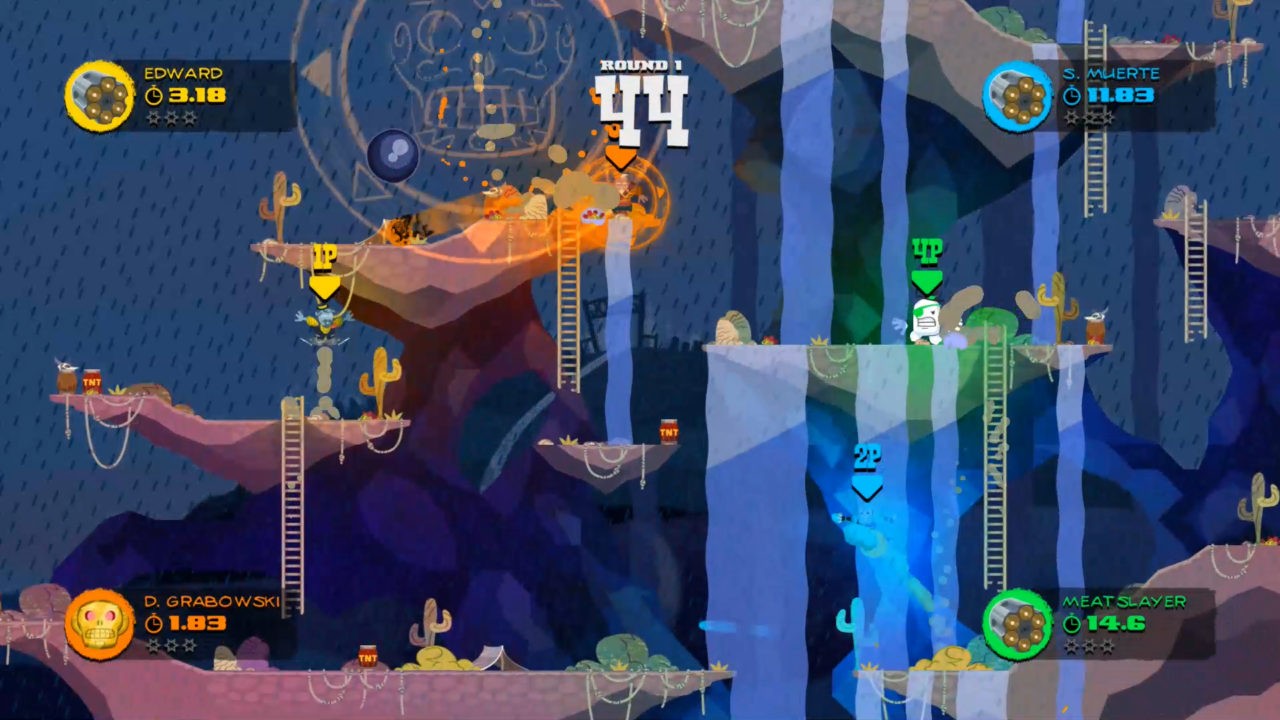
Nate: Sombrero is the sort of game that I think will have a lot of that, because it’s open to a wide variety of gamers. From my limited experience, I would say it’s deceptively simple. The concept is pretty straightforward, but the variety of weapons, modes, and stages give the impression that it has a low skill floor, but a high skill ceiling.
Nick: I hope so. I’ve tried to do that. It is pretty straightforward to pick up. You know, after just a round or two, people tend to figure it out. But there’s things, you know, like depending on how long you hold a jump button, that affects how high you jump. And you’ve gotta be pretty good with aiming, because it’s kind of a twin stick shooter, in the sense that you can shoot in any direction. So you gotta get pretty good at that.
And you can’t always rely on the explosive weapons that hit a bigger area, because those don’t always work well on some of the stages, you know? Each stage has its own hazards and unique things about it; some have destructible platforms, and some have walls that bullets will ricochet off of, so that can all affect gameplay. The people who can use those elements to their advantage, obviously they’re going to do a bit better.
Nate: So, I know we have a couple dozen different characters. About how many weapons are in there right now?
Nick: There’s thirteen, and then Bandidos has its own unique weapon powerup. So, when you get the golden monkey idol, you get a special weapon powerup so you can defend yourself a little bit better. Every other player is going to be chasing after you because they all want to get the idol too.
Nate: Yeah, and in a 2D game like that, you can’t do what they do in Halo, which is try to hide and evade. You’re going to have to pretty much face everybody.
Nick: Yeah, there’s really not any way to hide, although that ties into the stage design a little bit too, where there are ways to separate yourself a little bit. In the stage with the destructible platforms, you can blow up all the platforms around you so maybe they can’t reach you because it’s too far down, so they need a powerup that can go a little farther because there’s a limit to how far each projectile will go for each weapon, and it’s different for each weapon.
Or there’s the stage where all the walls ricochet, so you could kind of hide yourself in a little cubby hole… But every other player can still see you, so they’re all going to come for you. So it’s kind of like a game of Pac-Man at that point, where you have to go around the walls before they can reach you, because their bullets — some of the powerups the bullets will still ricochet, but some of the powerups the bullets will go through those solid objects. It’s a balancing act for me as a developer, but also a tactical one for the players.
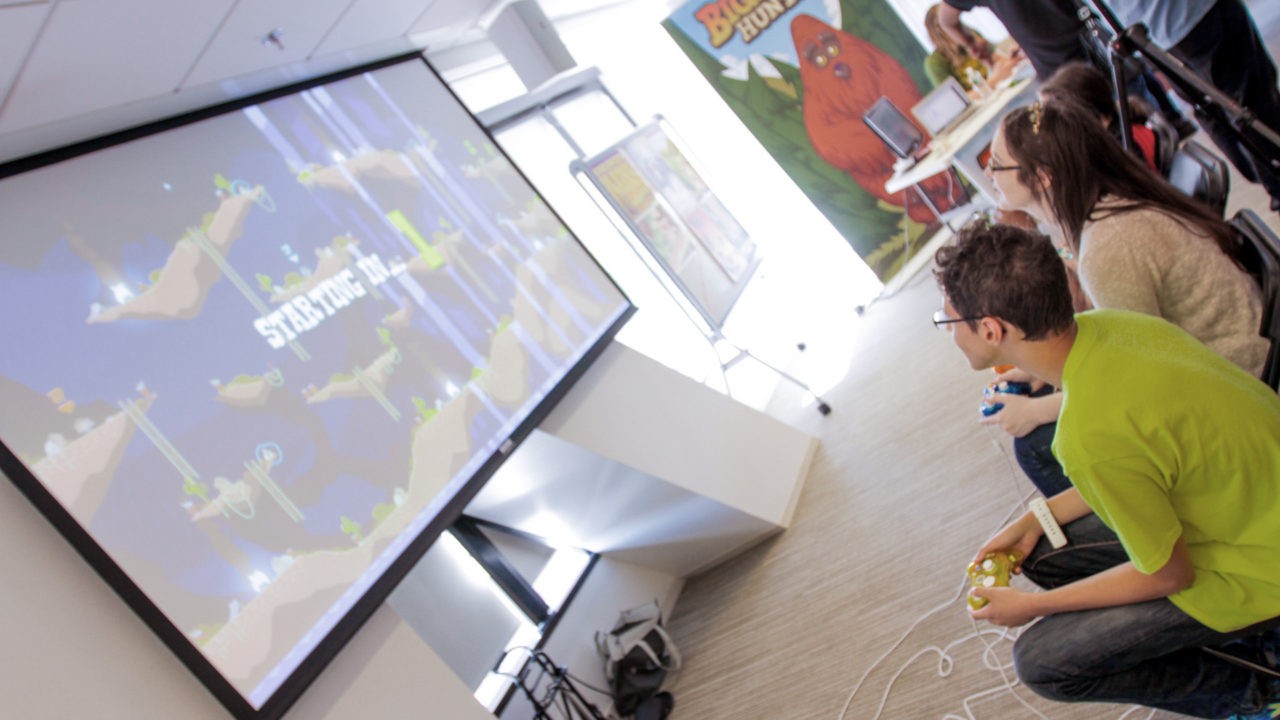
Nate: So, now that you have online multiplayer, let’s talk about Twitch play. A lot of developers — especially indie developers — are getting word-of-mouth from streamers that are playing their titles in front of an online audience. Have you considered what Sombrero is like as a spectator sport?
Nick: No. [laughs] Yeah, not even a little bit. It’s sort of happened organically at the events, because when I go to the events — especially the smaller events where it’s a bunch of indie developers, not something like PAX — people bring their laptops, or if they’re doing a mobile game, they’ll bring their mobile devices. So it’s harder for people around it to see what’s going on. I bring a giant projection screen and a projector. I think it’s 100″ or something like that. So, it ends up getting a crowd that way.
I’m assuming, because that keeps happening, that it’s fun to watch. I mean, it’s very colorful. It’s fairly fast-paced. The people playing it do tend to get into it after playing for a while. With something like Twitch or HitBox, it would probably do okay, if similiar 2D multiplayer games like this are doing well on Twitch. I know that I’ve seen a lot of Towerfall up there over the last few years, and I can’t imagine that Sombrero would not work in the same scenario. It might be a little bit harder to follow, because it’s more fast paced, but once you kind of focus on a specific player, it becomes a lot more interesting to watch I think.
Nate: It seems to have that Super Smash Bros sort of “everything’s on the screen at once” chaos that can be a lot of fun, even when it’s difficult to parse. The visuals are also pretty clear. It doesn’t take more than a fraction of a second to understand what any given player is doing.
Nick: Well, everything is color-coded. The color of the bullets, and the color of the explosions are based on the color of the player that caused the explosion. So, you know who took you out. I had to scale some of the chaos back a bit. There used to be a lot more debris when you caused an explosion. The explosion was bigger — like way bigger — and it got to the point where I’m sitting there making this and I can’t tell what’s going on anymore, so I needed to scale it back a bit.
But yeah, Smash Bros is a good example of the visual chaos. And I think that’s one of those games where it’s a little bit like a Magic Eye picture; you have to kind of unfocus and look past what’s on the surface a little bit to be able to see what’s going on. So, yeah, if Sombrero ends up being like that, that would be great. I mean, I don’t expect the success of something like Smash Bros, but if it gets the same kinds of fans, I think that would be pretty cool.
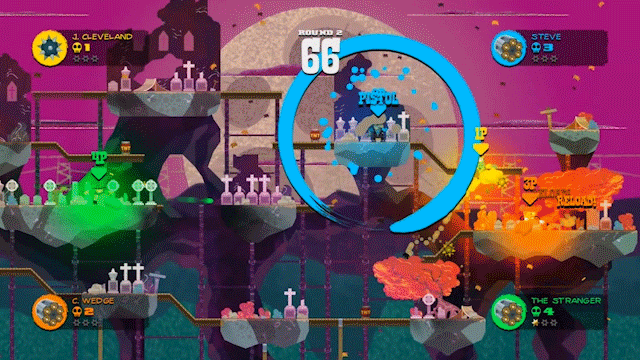
Nate: So it will be releasing on Steam, and then consoles afterward?
Nick: Yeah, the initial try for consoles is going to be Xbox One. It’s already been approved for release on there, it’s just going to be a matter of porting it. But I mean, I’ve never done a console game before, so that’s going to be another learning experience. [laughs] I’ll figure it out. I tried it at one point, maybe a year or so ago, I had run an earlier build of Sombrero on it and it seemed to work okay. It’s changed a lot since then, but if it was possible back then, I might just have to tweak things a little bit for console specs.
Nate: What was the biggest challenge in development so far? Was there anything that was a sticking point?
Nick: Oh, online multiplayer, by far. I’ve never done it before. I’m doing a lot of things that I’ve never done before all at once, which is probably why I have way more gray hair than when I started. I’m using a cloud-based multiplayer back end, called Photon, and it’s been used in a bunch of games. I think, Guns of Icarus, which is a pretty cool indie game, they used Photon for the back end and they had some good things to say about it when I contacted them, and they’ve been very responsive with support and all that kind of stuff.
But, it’s been having to rethink the way some things are done — like, something as simple as player input. If it’s a local match, all I need to do is check, okay, on gamepad 2, the player is moving the controller input left, so move the player left. That’s easy, that’s about what it is. In online play, it doesn’t work like that. Because there may not be a gamepad for player two. So, it becomes when the player pushes the analog stick left, send this data. And the data might be something like the player number and their action — like a number representing their action — like, pressing left is -1, pressing right is +1. So, send that.
And then, say, “oh okay, now this player number means this, so I have to move the player left.” There’s a lot more steps, and some of that stuff, you know I hadn’t really maybe thought out as well for multiplayer as I should have, initially. But I had never planned for online multiplayer to begin with. And it was only about a year in that I thought, “Hey maybe I should do things this way, so I could maybe add online multiplayer, maybe later.” Lots of maybes. [laughs] I had to go back and basically rewrite the player input so that it works the same, whether it’s local or online, and it knows what to do based on the player number and all that kind of stuff. And that’s something simple — that’s pressing left on the controller.
And then, shooting — what weapon is it, what angle is it going at, how fast is it going, what happens when it bounces off of something? You know, you gotta synch up all that stuff. So that’s been a lot of fun to learn how to do.
Nate: What’s been your favorite part of developing Sombrero so far?
Nick: Honestly, I’ve kind of enjoyed all of it. I’m coming from an art design marketing background, never really been a developer. Just had an interest in it. I knew web technology, knew how to code in flash, all that kind of stuff, but never made a full commercial game like this before.
And it started off really simple. It was going to be Loot, and that was it. That, and like five characters, and I was going to sell it for like $5. Now, three years later, it’s much, much bigger, there’s a lot more gameplay modes. And that’s all basically based on feedback from people. I was like, “Okay maybe I can make it a little bit bigger, maybe I can add more to it.” Game community feedback’s been awesome. That’s why it’s become what it’s become; that’s been the driving force more than anything, is just getting positive feedback, you know, getting good, solid, valid criticism. It’s been great to do that, to use that kind of community feedback to try and focus the game more on what it could be.

Nate: So, you have said that there will be free post-release content.
Nick: Yep.
Nate: Is all the post-release content going to be free?
Nick: Probably not, but I have a good reason for that: Initially, I’ll add more stages for free, I’ll add more characters for free. It’s just me, so it’s fine. I’m the one making all the decisions. And I don’t want to blame the publisher for that changing; I want to thank the publisher a little bit for that changing? Because they brought up “What if a much bigger character comes in and says, hey you know it would be cool to put such and such character in the game” — there might be a licensing fee, there might be some need for them to get something for providing the rights to use that character, things like that.
So, everything I had initially planned to be free is still going to be free. But if something super exciting comes along, and there’s no way to do it except to charge people $1.99 or something for the character, I figure that can’t hurt. And it’s not a requirement. You’re not going to miss out on any gameplay by not having a specific character, because the characters are just aesthetic.
Nate: Does the possibility of paid post-release content raise the possibility of bigger expansions to the game?
Nick: Yeah, it opens up the possibility for maybe adding another gameplay mode — something that I had thought about doing, but hadn’t really decided on, because I mean that’s a lot more work than adding another character or adding another stage. Because I need to go back and make sure that gameplay mode works in all the previous content. So, I think in the long run, it could end up being a good thing.
And the point where, you know, it becomes popular or successful enough to justify charging a couple bucks for a character or something like that, I feel like that will be a really good problem to have. So, it’s something I can deal with. Either way, there’s still going to be a bunch of free content — the same free content I had planned on doing before, and no less of it.
Nate: And then potentially more, beyond the free content already planned.
Nick: Right. Hopefully. It would be great to do that.
Nate: So, after all of this has settled, once you actually launch, have you started thinking about what’s next?
Nick: Realistically, even after the game launches on PC and Xbox, there’s still going to be a lot more work to do, adding more content. Especially when it hits Steam. I’m sure that, even though it’s being tested on two dozen different computer combinations, a little glitch here and there might pop up that I have to fix. So, my foreseeable future, probably the year after release, is going to be fixing issues, adding content. Hopefully, it’s more than a year that I get to keep adding stuff to it. Again, that’s another great problem to have.

Nate: Do we have a tentative release date or window yet?
Nick: Soon.
Nate: Blizzard “soon?”
Nick: [laughs] Online multiplayer’s in testing right now. There’s still a couple things I need to add to online play to synch up a few things, things I probably don’t have to do but I’m going to do anyway, just because I want to be sure everything is synched up as good as it possibly can be. I need to go in and add some options to the options menu. There’s these little things here and there after the online multiplayer that I want to patch up a bit before I get it out. It’s near the finish line. I don’t want to pick an exact date and then end up in a No Man’s Sky scenario.
Nate: …Ahem.
Nick: I know they’re getting a lot of crap, and I’ve definitely given them some crap, but I also feel bad because that was a Sony hype machine in effect.
Nate: That’s putting it mildly, but I can agree there. They set immense expectations, and then came nowhere near delivering. If they’d managed those a bit better, people might not have been so upset.
Nick: Yeah, I also think that people would have been acting happier, but it would have made a lot less money. It’s the hype machine that’s caused the giant sales boost. It would have sold — at this point, it probably would have done pretty well. I can imagine it selling, it’s been out how long? Two weeks? Probably 100,000 copies by now. But that’s not what it’s at. It’s at like a million. [laughs] It just exacerbates all these issues that happen to every indie game, because you can’t avoid them. There’s always going to be these glitches and bugs and stuff; they’re going to fix them, obviously.
Nate: So, what you’re saying is that Sombrero has 18 quintillion…
Nick: [laughs]
Nate: — No one will ever play every possible match in Sombrero. It’s mathematically impossible.
Nick: If I’m going to take a marketing approach to that, instead of a honesty approach to answering that question, that’s actually true. Because the shooting and the movement is based on the analog sticks —
Nate: Right. Just about any game could make that claim, if you interpret it just right.
Nick: There’s infinite amount of permutations based on the sensitivity — well, I guess not totally infinite. Effectively infinite permutations of gameplay, just based upon the sensitivity of your analog sticks. Go out and buy those Xbox One Elite controllers — especially with Sombrero skin on them, because we’ll get kickbacks on them — and your possibilities are endless.
Nate: Every variation, plus all of those variations while holding that sweet, sweet Sombrero controller.
Nick: –but don’t think into it too deeply, otherwise you’ll realize you’re being lied to. [laughs]
Nate: You don’t have Sony here man, we gotta kickstart this hype machine. So, anything else you wanted to add?
Nick: Oh, we could talk about race and gender politics in games — no, I don’t want to do that. [laughs] There’s enough content about that out there at this point from lots of other people — people are all going towards that.
Nate: So I can’t help but notice that you’ve mentioned race and gender politics in games. Would you care to…
Nick: Oh man, I’m so over it. I’m so sick of it with everybody on every side — just all of you people just need to go away, go play video games. Aug lives matter, Nate.
Nate: [laughs] Indeed. Thanks for taking the time to talk to me. Good luck on your release!
Follow Nate Church @Get2Church on Twitter for the latest news in gaming and technology, and snarky opinions on both.
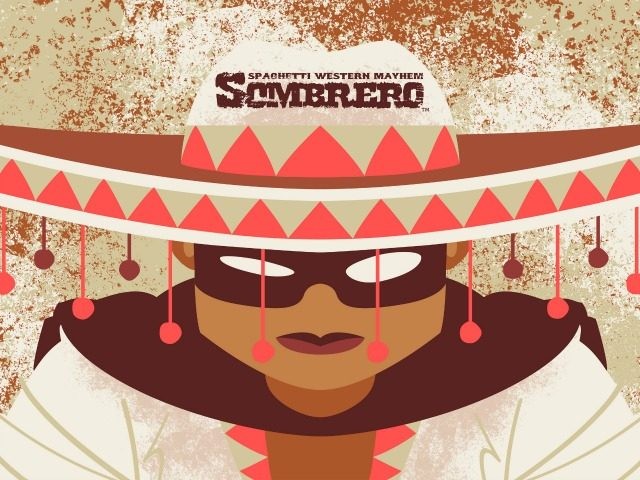
COMMENTS
Please let us know if you're having issues with commenting.